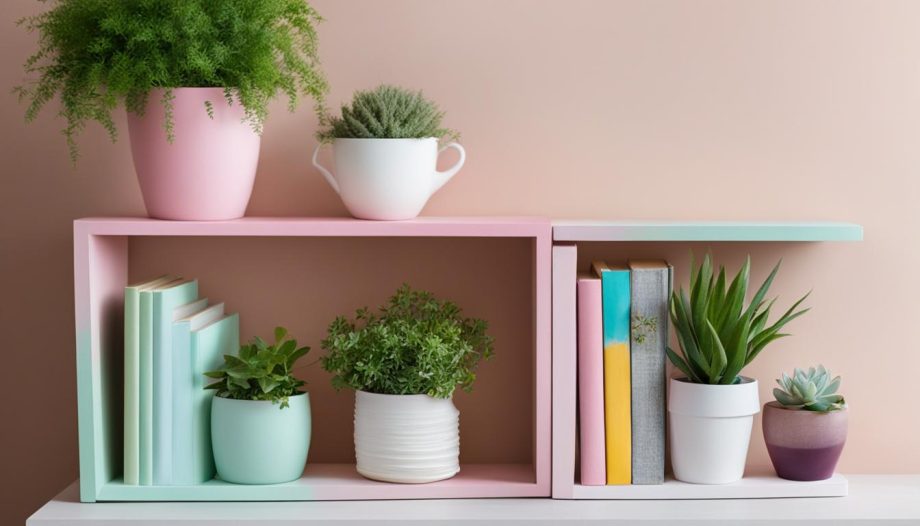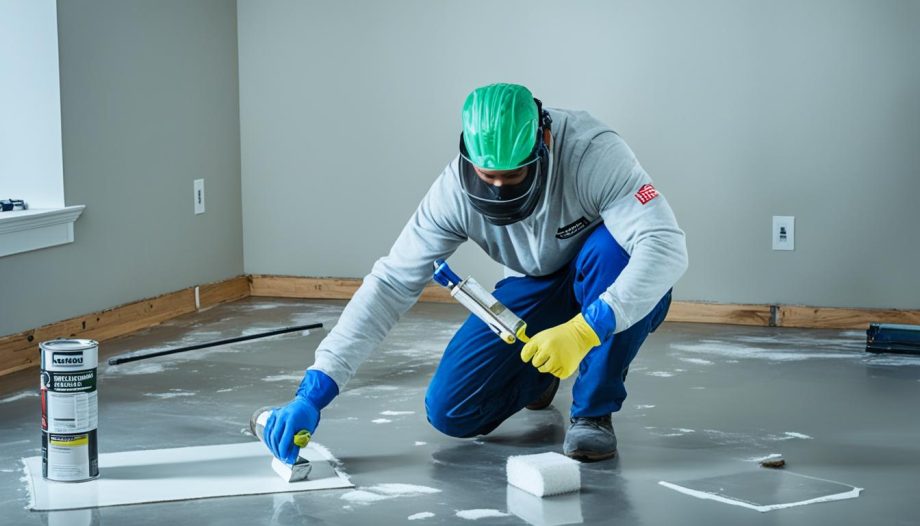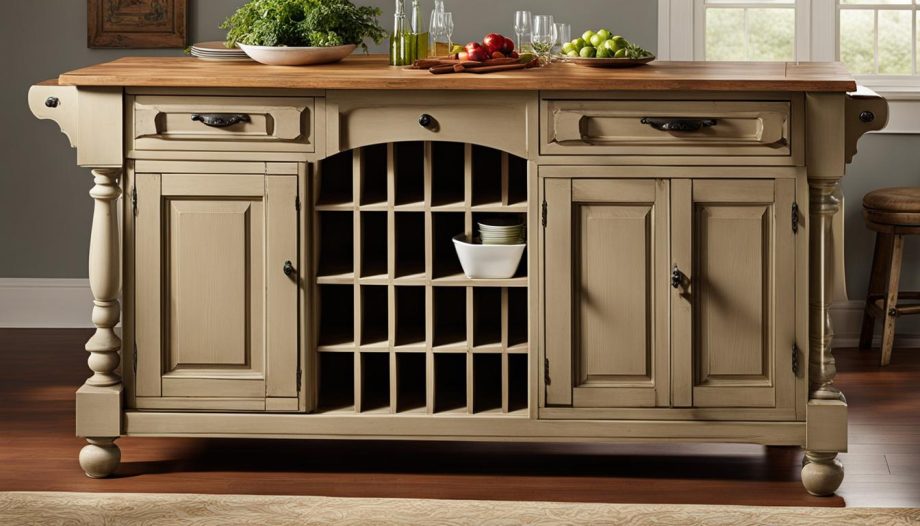Discover an affordable solution to breathe new life into your living space with this ultimate particle update guide. Rather than discard those shelves that have seen better days, our guide on how to update used particle board furniture will lead you through a simple yet effective refurbishing process. Whether you’re dealing with the common wear and tear, or your shelves have succumbed to moisture damage, learning to update used particle board can save you money and add a dash of personal style to your decor.
Transform a worn-out particle board shelf into a stylish piece by painting it in pastel colors. Add small plants, books, and attractive home decor to the shelf to make it look more vibrant and lively. Show these elements arranged neatly on the shelf with some light streaming in from a nearby window.
Join us in transforming your used particle board furniture from frumpy to fabulous. We’ll provide all the information you need on updating used particles, ensuring that at the end of this journey, you’ll have shelves that look as good as new—possibly even better. Keep reading to grasp the full potential of your particle board furniture and turn it into a statement piece that silently speaks volumes about your impeccable taste and resourcefulness.
Understanding Particle Board Wear and Tear
Particleboard, a commonly used material in furniture, is particularly vulnerable to various kinds of deterioration that can significantly impact its utility and aesthetics. This sensitivity primarily stems from its construction which involves wood by-products and plastic resin glues finished with a plastic veneer. Over time, this material can exhibit several types of damage, each affecting the particleboard in different ways.
One of the more frequent issues encountered with particleboard is surface damage. The plastic veneer that protects the surface is susceptible to scratches and chips, which can occur through everyday use or accidental impacts. Moreover, these blemishes can be challenging to repair, often requiring a full used particle update to restore the original look of the furniture item.
Stains represent another form of damage that particleboard furniture faces. Whether from spills or prolonged exposure to certain substances, these discolorations can penetrate the veneer, leading to permanent marks. A thorough particle update guide can provide invaluable advice for tackling such stubborn stains, but prevention is typically the best strategy.
Water damage is the most detrimental issue for particleboard. Moisture can lead to the swelling of the core material, which may cause irreparable harm, such as bubbling, warping, or even disintegration. In cases where the veneer lacks proper lamination, the risk of permanent discoloration or structural damage increases significantly, highlighting the importance of a particle software update to deal with water-induced issues effectively.
- Scratches: Can lead to unsightly grooves on the surface.
- Chips: Small pieces of the veneer can detach, revealing the underlayer.
- Stains: May cause permanent discoloration.
- Swelling: Moisture exposure can cause structural swelling.
- Disintegration: In worst-case scenarios, particleboard can crumble.
Understanding these common forms of damage and how they impact the durability and appearance of particleboard is crucial. With this knowledge, individuals can take proactive measures to protect their furniture and seek out effective methods for updating and repairing used particle pieces when necessary.
Step-by-Step Guide to Update Used Particle
Refreshing a used particle device can breathe new life into your furniture pieces. Whether you’re dealing with superficial blemishes or more severe issues like water damage, the following guidelines will help you perform a particle firmware update and ensure your particle board furnishings are looking as good as new.
Repairing Cosmetic Damage
To tackle minor scratches and dents on particleboard surfaces, you’ll need to apply wood filler or putty with precision. Using a putty knife, fill in the affected areas, and once the filler dries, gently sand it down with fine-grit sandpaper to blend seamlessly with the surrounding material. It’s critical to update used particle furniture surfaces by cleaning and sanding before any refinishing step.
Dealing with Veneer Separation
Over time, the bond between the plastic veneer and the core of particleboard can weaken—a particle update in this regard involves stripping the old adhesive and reapplying contact cement. Press down firmly on the veneer with a roller or a block of wood to ensure a strong reattachment, setting the stage for a revamped finish.
Fixing Water-Induced Swelling
Water damage can be detrimental to particleboard, causing it to swell. To mend this, damaged areas need to be carefully removed, typically with a sharp blade. Subsequently, apply wood filler, then smooth out the area by sanding it down for a polished look. If extensive damage is present, consider replacing the entire damaged section, weighing the cost against the item’s value.
- Inspect the furniture for visible damage and clean the surface.
- Apply wood filler or putty to repair scratches or chips.
- Remove any separated veneer, apply adhesive, and reattach it securely.
- Cut away water-swollen areas, fill, and sand them down to uniformity.
Finishing Touches for a Lasting Update
Embarking on the journey of updating used particles within your home doesn’t have to end with just a slap of paint. To truly make your labor stand the test of time, the final steps are pivotal. When aiming for that sleek, renewed look on particleboard furniture, the key lies in priming and painting with precision. The use of a compatible primer is central to your particle update guide, setting the stage for paint to adhere flawously, and diminishing the need for excessive coats.
After a meticulous sanding process, in which every nook and cranny has been smoothed, a coat of primer lays the groundwork. Opting for a roller to apply the primer—and eventually the paint—can yield a velvety finish that’s free from the tell-tale marks of brush strokes. Textures, though, can add character, and if so desired, the appropriate technique can be applied to achieve the effect. A series of thin paint applications, separated by brief sanding interludes, can elevate a simple update to a professional-standard refresh. This layering strategy not only ensures a more even coat but also contributes to the longevity of your furniture’s new facade.
The grand finale comes in choosing the right sheen; a gloss or high-gloss finish can be transformative, bestowing upon the piece an inherent resistance to scuffs and stains, and facilitating a much easier cleaning process. Be guided by this particle update guide, and rest assured, your mission in updating used particles is on its way to yielding results that are both aesthetically pleasing and enduring. It’s these finishing details that convert a mundane update into a revitalization that resonates with pride and purpose.




